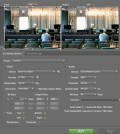How Mobile Learning Will Redefine Education As We Know It

While there’s long been a fear of mobile learning from some parts of higher education, students report that mobile can be a powerful tool for learning. In fact, most students in a recent Educause survey said they spent more time using mobile devices for homework and research than for social media, streaming video or playing games.
While there are legitimate concerns about equal, affordable access to mobile devices, gaps in mobile access appear to be decreasing. The same Educause study found that more than 95% of Gen Z have access to smartphones. Given that only 91% have access to laptops, it’s clear that online learning materials should be mobile-first to expand access.
Schools need to embrace mobile devices to engage students. The current need for remote learning is an opportunity for higher education to build, test and roll out mobile offerings in class that can be used even once students return to class in person. These tools have the potential to redefine higher education for the better, if colleges and universities adopt them thoughtfully.
Here’s how mobile will revolutionize learning.
Mobile content can encourage interaction in class and outside of it
Right now, many professors are coping with distance learning by sending students filmed lectures in an effort to replicate the traditional college experience. There’s no data to show that this approach holds students’ attention. Gen Z students are social and emotional learners, so to capture students’ attention, professors need to encourage interaction.
Professors believe that mobile learning gives them “more opportunities to access digital content on demand, and study at their convenience.” Instructors should take advantage of that, rather than trying to replicate traditional instruction on mobile.
Mobile tools make it possible to incorporate more engaging learning content for students. Educators can create mini-quizzes to help students test their recall of information throughout a lecture and keep them from zoning out. And students can complete assignments outside of class entirely on their phone, using editing tools not that different from those in popular apps like TikTok.
As an educator, there’s no way to guarantee that students are paying attention to every class when it comes to distance learning — but you can utilize mobile activities to ensure you’re capturing their attention and engaging them with educational content.
Why now is the time for mobile learning
COVID-19 has revealed the need for flexibility in teaching and learning more than ever before. Schools are now faced with the need to evolve their approach to teaching to meet the needs of remote students. But once schools reopen, these new best practices for mobile learning and engagement should not be lost — they should be applied to all classrooms.
Today, most students feel that mobile tools give them the opportunity to learn in the way that works best for them. Gen Z students grew up in the era of social and emotional learning, and want to engage with content in ways that previous generations weren’t looking for from their college.
To reach these students, higher education needs to stop stigmatizing mobile learning. Mobile is a technology platform like any other, and educators can take advantage of the widespread adoption of mobile devices. It’s time to move away from thinking of mobile devices as a distraction, and instead start thinking about them as a tool to better education.
Schools need to set expectations of what effective mobile learning looks like and teach students how to engage with new mobile tools. For example, educators can set standards for each class so that students know what appropriate mobile engagement looks like. These standards can include expectations for how often students will engage with material, how they will review classmate’s submissions and more.
As schools adopt mobile learning, ongoing optimization will be critical. This is a new tool in education, so schools need to test what is most effective in the classroom. Then, they can build their mobile learning programs based on what the data shows is engaging students most. In addition to engagement, mobile learning programs should test information recall to ensure that students are retaining what they’re learning. This allows instructors to compare the educational impact of filmed lectures alone, hybrid lectures with interactive mobile components and mobile programs with very few lecture aspects, and continue to adjust their classroom accordingly.
The schools that succeed in mobile learning will be those that are committed to ongoing innovation. There needs to be a willingness to continually optimize the approach to mobile learning based on what keeps students engaged and helps them master the material.
Interested in how mobile learning can work for your school?
At Ensemble Video, we’re committed to mobile learning innovation. Our app allows educators to record, manage and publish your videos from an iPhone or iPad, and lets students create and upload mobile assignments. Contact us or request a trial to see how it works for yourself.









You must be logged in to post a comment Login